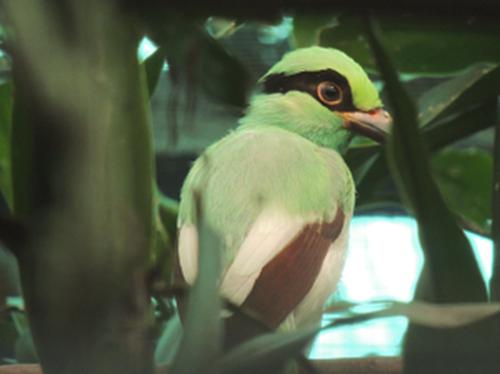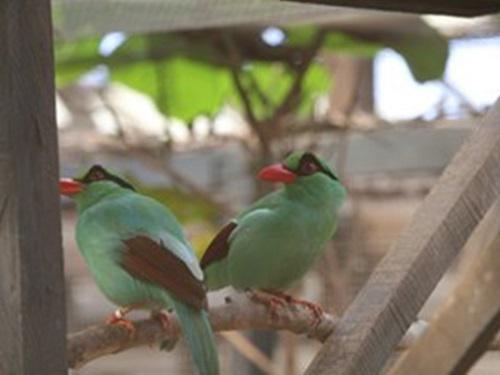Anaïs Tritto
This project aims to search for remaining wild populations of the Critically Endangered Javan Green Magpie. Once a site will be discovered, Education and Awareness Programme will start to prevent poaching of the last populations in Java.

One of the fledglings Javan Green Magpie.
The project aims to survey the mountains in West Java, Indonesia, to look for remaining wild populations of Javan Green Magpie (Cissa thalassina). This species, endemic of West Java is at the brink of extinction and could remain in small and fragmented areas. It is listed as Critically Endangered, due to intense bird catching to supply the illegal bird trade. Indeed, this species is considered as an attractive cage-bird because of the large variety of vocalisations and its unusual colours. Scientists did not find it in the wild since 2005 (mainly because this species did not receive much attention before) but individuals can regularly be found in illegal bird markets in West Java, meaning that wild populations should occur in some remote mountains. The project is integrated to the Javan Green Magpie Conservation Programme, implemented by Cikananga Conservation Breeding Centre (West Java, Indonesia), which created a captive population since 2011 as a safety net and is developing intensive research in the wild to prevent the last individuals to be caught.

Javan Green Magpies in Cikananga Conservation Breeding Centre.
The project will survey areas that are considered suitable, based on historical data and information from local people. Several National Parks and Nature Reserves are already on the scope of this project and will be conjointly surveyed by a team of ornithologists, Biology students and Education Officers. Once a population will be found, an Education Programme with local people will start to encourage them to protect this population by being the “forest protectors” and integrate the protection of this species into their local regulations (village laws). The government will also be approached to implement a long-term protection of this species by including it into the list of the birds protected by Indonesian law. A two-sided awareness programme is needed (to the local people and to the government) to insure the survival of this species.